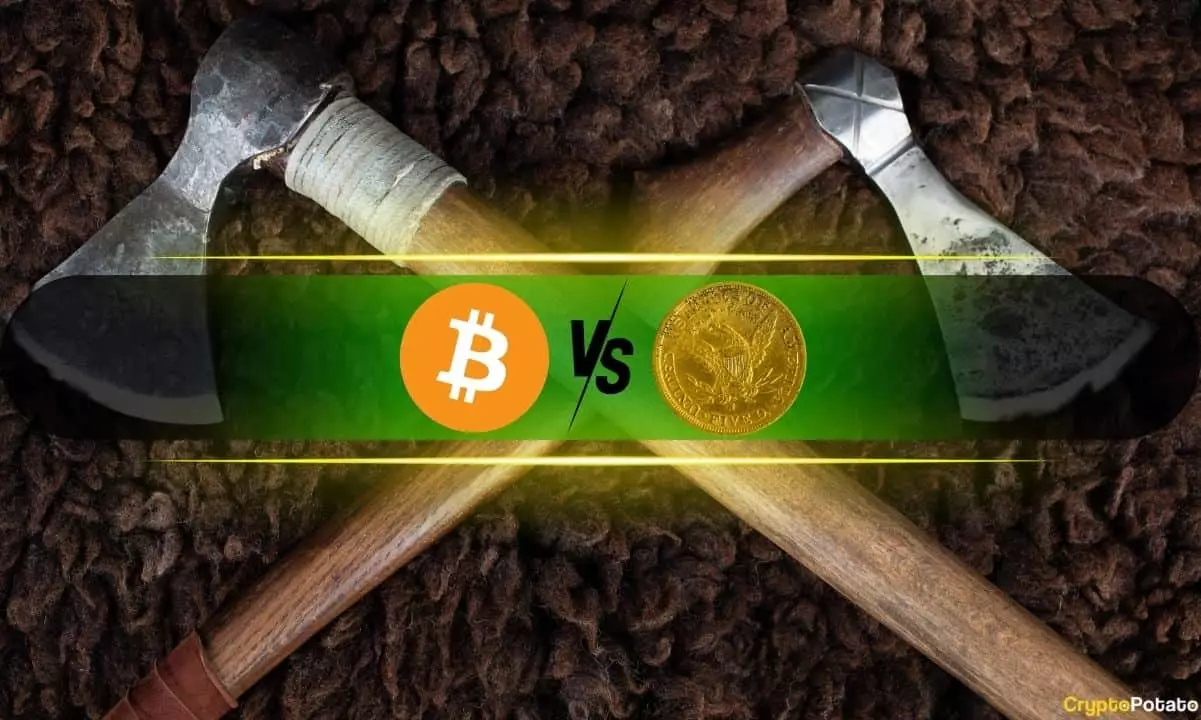In the world of finance, few themes are as captivating as the contrasting fates of Bitcoin and gold over recent months. Traditionally viewed as a hedge against inflation and economic instability, gold has soared to unprecedented levels, nearing the $3,000 per ounce mark for the first time in history. In stark contrast, Bitcoin, the flagship cryptocurrency, has languished below the $100,000 threshold for much of February 2025, raising questions among investors and analysts about the underlying forces driving these divergent trajectories.
The rise in gold prices can be attributed to several concurrent global phenomena. Chief among these is persistently rising inflation across the United States and other economies, compounded by geopolitical turbulence stemming from contentious political figures like former President Donald Trump. Since his second inauguration in January, actions from Trump’s administration have instilled fear and uncertainty in financial markets, prompting a flight to safety among investors. Gold, renowned for its stability in times of crisis, has seen a remarkable rally, reminiscent of its behavior at the onset of the COVID-19 pandemic in 2020.
Moreover, as central banks worldwide increase their reserves of gold—a strategy typically employed during periods of inflationary pressure—the precious metal has reclaimed its stature as a universally accepted safe haven. Financial analysts and market pundits, who have historically viewed gold with skepticism, are now singing its praises. The prediction that gold will soon surpass the $3,000 mark is gaining traction, signaling a potential seismic shift in investor attitudes towards this age-old asset.
Bitcoin’s Struggles: A Closer Examination
Conversely, Bitcoin’s performance paints a less rosy picture. After peaking just above $110,000 on the day of Trump’s inauguration, the cryptocurrency has experienced a significant correction, currently sitting approximately 15% lower than its all-time high. Despite the prevailing sentiment that Bitcoin should act as a hedge against inflation—akin to gold—its recent struggles have led analysts to question its market appeal. Notably, demand for Bitcoin has notably waned, particularly in the U.S., as evidenced by the declining Coinbase Premium and lackluster performance of domestic exchange-traded funds (ETFs).
One must consider the psychological aspect of trading in the cryptocurrency market—a notoriously volatile space where sentiments can swing dramatically. The recent price movements of Bitcoin seem incongruent, leading to speculation around the currency’s stability and worth. Investors, in their perpetual quest for the next big opportunity, may find themselves disillusioned if Bitcoin fails to regain its upward momentum in the shadow of gold’s ascent.
The ongoing competition between gold and Bitcoin raises critical questions for investors. If gold continues to rise amidst prevailing economic uncertainties, could Bitcoin be relegated to a secondary asset, struggling to attract investment interest? The prevailing notion suggests a potential for Bitcoin to decouple from traditional market responses—a phenomenon seen in the past where Bitcoin defied expectations and reversed trends against the backdrop of prevailing market sentiments.
In a market defined by its unpredictability, the ability of Bitcoin to rebound remains a tantalizing possibility. Market cycles historically demonstrate that price movements can rapidly change, often in ways that contradict general assumptions. As many anticipate Bitcoin’s decline in light of gold’s ascent, there lurks a possibility of an unexpected revival in demand for the cryptocurrency.
The Future: Divergence or Convergence?
The rift between Bitcoin and gold presents a compelling narrative of financial assets navigating a complex landscape marked by inflation and economic uncertainty. As we analyze these patterns, it becomes clear that while gold appears poised for further gains, Bitcoin holds a wild card that could disrupt conventional expectations. Investors must remain vigilant, as the volatile nature of cryptocurrency markets might yet yield surprises, challenging the prevailing wisdom and offering new opportunities in the face of adversity. With the stakes rising, the shifting dynamics between these two assets warrant ongoing scrutiny as we advance through an increasingly unpredictable financial landscape.

